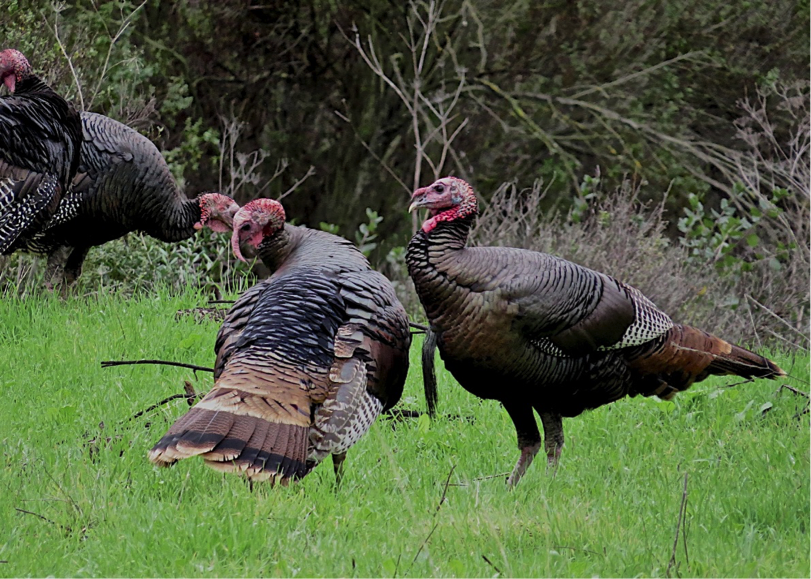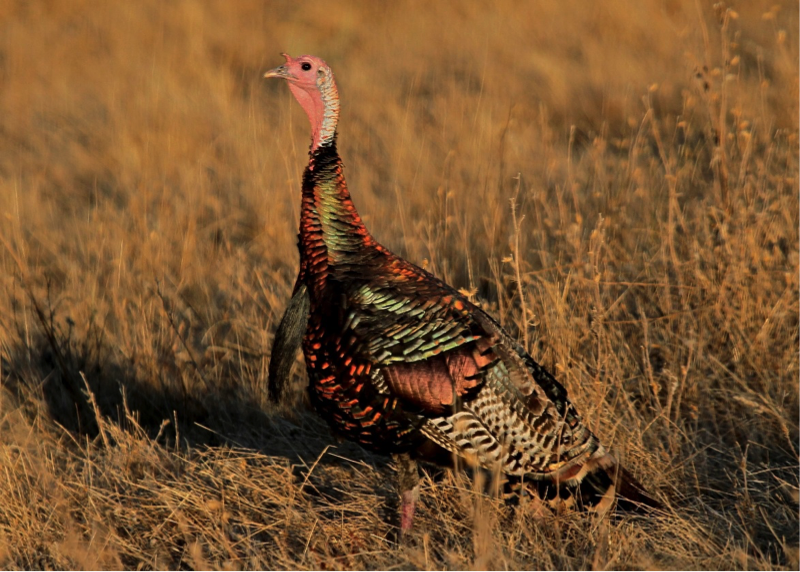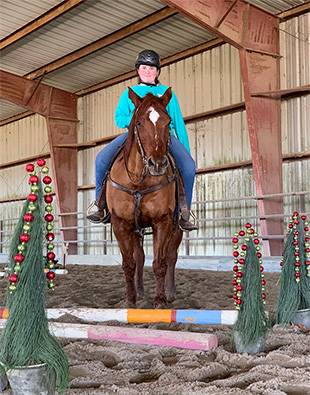Wild Turkeys abound in southern Alameda County. It’s hard to believe that in the early 20th century the entire population of turkeys in the United States was estimated at around 30,000 and restricted to a few pockets in the east. Efforts to protect this native bird were put into effect by trapping and moving turkeys to prime habitat areas in other states. Turkeys do well when they are wild near farms and ranch lands where they can find grain and berries along with wild grasses and insects.
 By 1973 turkey population was estimated at 1.3 million and today the estimate is around 7 million nationwide.
By 1973 turkey population was estimated at 1.3 million and today the estimate is around 7 million nationwide.
As the one photo shows, many of our turkeys in the Fremont/Dublin area sport some white feathers. This influence was brought about by Bernie Leal who lives on a small ranch in Fremont. The ranch has been in the Leal family since the 1880s. When Bernie was given some white Royal Palm chicks in the late 70s, he raised them like pets and as they grew they followed him around the 27 acre ranch.
Sometime in the mid-80s when the Leal birds were old enough to breed some turkey jumped the fence. Either a white Royal Palm jumped out of the barn yard or a wild turkey jumped into the barn yard and started the wild turkeys found today in the area, those hybrids with white feathers.
Sometime in the mid-80s when the Leal birds were old enough to breed some turkey jumped the fence. Either a white Royal Palm jumped out of the barn yard or a wild turkey jumped into the barn yard and started the wild turkeys found today in the area, those hybrids with white feathers.
Mating takes place in late March through the early part of May. Male turkeys known as Toms are often seen around Arriba Vista doing their strut (dance) for the hens.
The photo of the very colorful Tom was taken at Arriba Vista on a very late August day when the sun was about ready to drop behind the coastal mountains. That soft gold light enhanced the bird’s natural colors, that’s my favorite turkey photo.
Charlie





